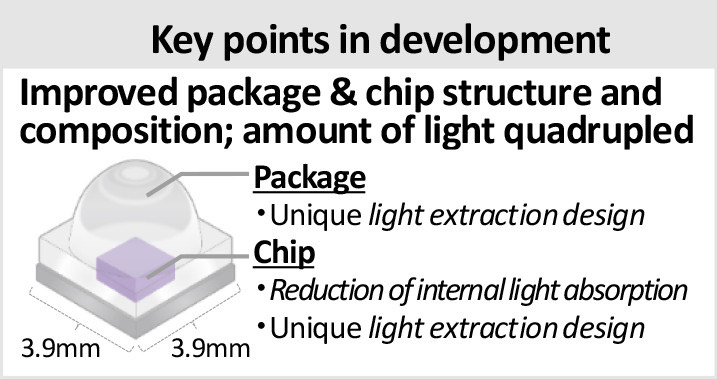News: LEDs
22 April 2024
Toyoda Gosei develops high-output UV-C LED
Toyoda Gosei Co Ltd of Kiyosu, Aichi Prefecture, Japan has developed deep ultraviolet (UV-C) LEDs with light output that is among the highest in the world, it is claimed.
UV-C is used in disinfection as it destroys viral and bacterial DNA structures and inhibits their replication. As an alternative light source for mercury lamps used for disinfection, improved performance of UV-C LEDs has been expected. Sample sales of Toyoda Gosei’s high-power LEDs will begin internationally from April (starting in Japan, China and South Korea, then successively for other regions) to promote their wider use for disinfecting water, air and surface.
Compared with mercury lamps, UV-C LEDs are environmentally friendly as they are mercury-free, more compact, and have a longer life, and these advantages drove their widespread use in devices for disinfecting air and surfaces during the Covid-19 pandemic. However, since they differ from lighting LEDs in composition, light output has been still limited. For water purification plants and other situations where high disinfection performance is needed, mercury lamps are still used.

Toyoda Gosei says that it has leveraged its expertise in crystallization and the design of blue LEDs for lighting to develop UV-C LEDs that achieve light output of 200mW with a single chip when driven by a 350mA current. Improvement of the LED structure and composition has quadrupled the amount of light that can be extracted. Enhanced LED performance — including about three-fold greater disinfecting capability — is expected to expand their range of applications, including to a future alternative to mercury lamps.
Toyoda Gosei launches UV-C high-speed surface disinfector









